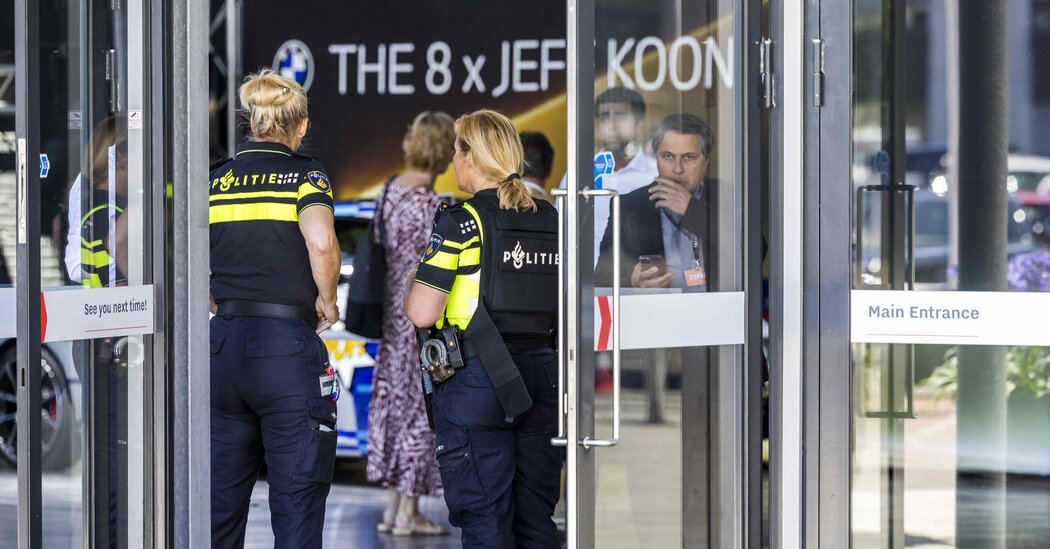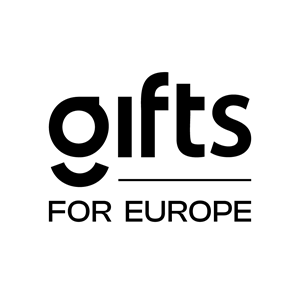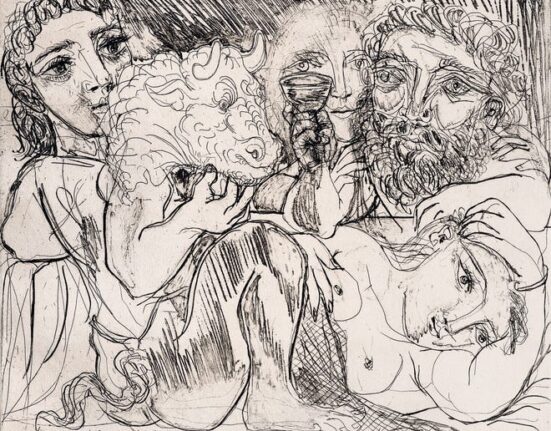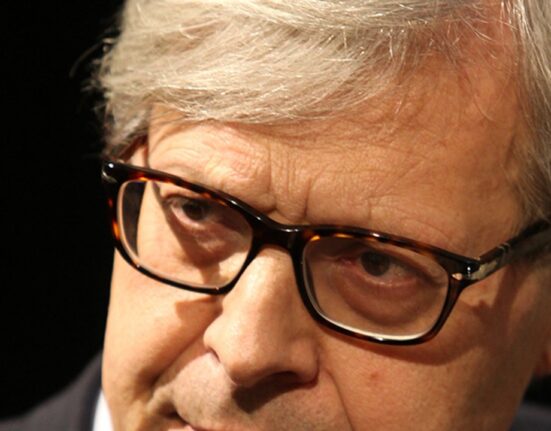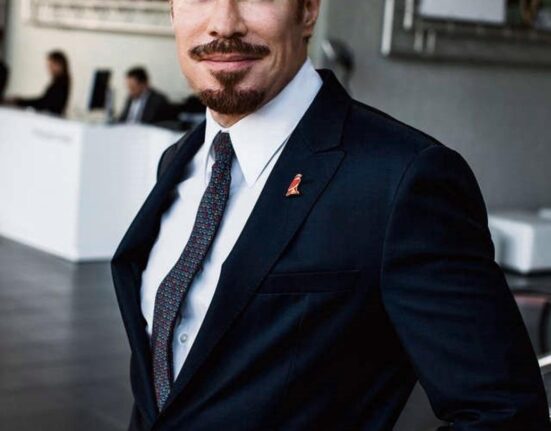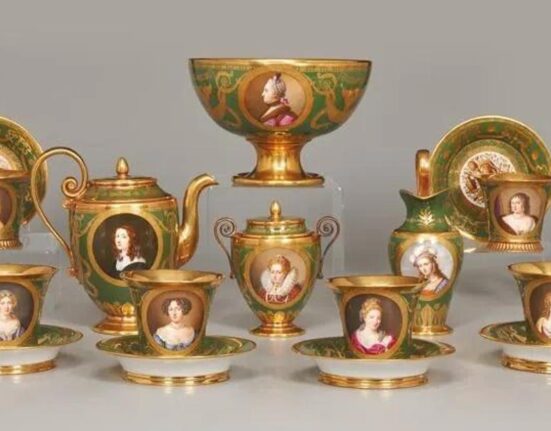The last thing the organizers of a venerable event like the European Fine Art Fair want to be associated with is a heist.
But during last year’s fair in Maastricht, the Netherlands, four men smashed a glass display case with a sledgehammer and took jewelry, the police said, in broad daylight as horrified collectors and dealers looked on.
A spokesperson for the Dutch police said last month that a team of 20 officers was still working on the investigation, in cooperation with Interpol and Europol, and that a reward of 500,000 euros (about $533,000) was being offered by an insurance company investigative agency. No one has been charged with the crime yet, and the police would not specify what jewelry was taken.
So as the latest edition of the fair, known as TEFAF, opens on Saturday, running through March 19, security may be on the minds of participants.
About 270 dealers from all over the world will be showing their wares with a wide variety of specialties, including the jewelry specialist Baghat of Mumbai, India, and the design gallery Friedman Benda of New York and Los Angeles. The fair’s Showcase section, for newer galleries, includes London’s Callisto Fine Arts and nine others.
“It hasn’t stopped dealers from coming back to the fair,” Hidde van Seggelen, the fair’s chairman, said of the robbery. (The London jewelry dealer Symbolic & Chase, the target of the robbery, was invited to return but is not participating.)
Though Mr. van Seggelen, a dealer of contemporary art based in Hamburg, Germany, said he could not divulge too much about security measures, two new features will be obvious to all. Metal detectors at the main entrance will be on hand for the first time, and in another new precaution, visitors will have to check their bags. “We’re taking the right measures,” he said.As for the galleries, “They trust us,” Mr. van Seggelen said. “We gave a briefing to all the dealers, and they realize this was an exceptional case that happened.”
Marie-Amélie Carlier, an exhibitor who is the director of the Paris gallery Brimo de Laroussilhe, said that she was not concerned.
“It was about jewelry, so it’s a bit different,” said Ms. Carlier, who will be showing medieval and Renaissance works, ones that are harder to make off with. “We are not very worried about works of art.”
The noted contemporary art collector Joop van Caldenborgh, who established a private museum called the Museum Voorlinden in Wassenaar, the Netherlands, his hometown, also expressed a lack of worry.
“I’m not that easy to scare,” said Mr. van Calderborgh, who serves on TEFAF’s advisory board and has attended the fair many times. “And most people aren’t, either.”
Masterpiece London recently announced that it would not hold its fair this June, so Maastricht remains the rare fair with deep reserves of pre-20th century artworks.
“We’ve been extremely lucky that we’ve been able to survive,” Mr. van Seggelen said of TEFAF Maastricht, which is on its 36th edition (a newer New York edition takes place in May).
“Covid was difficult,” he added. “And we’re a destination fair that’s not in a major city.” The 2021 edition of TEFAF Maastricht was entirely virtual, and 2019 was the last time the fair both took place in its early March time slot and ran its full 10-day length.
The exhibitor Marianne Rosenberg, who runs Rosenberg & Company in New York, said that the winnowing of Masterpiece, while unfortunate, “strengthens the hand” of TEFAF, adding, “The fairs that remain are stronger.”
Ms. Rosenberg has spent her whole life dealing art — her grandfather was Paul Rosenberg, who helped create a market for Picasso’s work and became one of the early 20th century’s most influential dealers — but this is her first appearance at TEFAF. She joins a dozen other galleries debuting at the fair.
She will be showing around 40 works, and visitors to her booth in the section for works on paper will not see the traditional marker of an already-sold piece.
“I don’t like red dots,” Ms. Rosenberg said. “When I sell something, I take it down and I put something else up.”
Among her star offerings is Jacques Villon’s Cubist drawing “Étude pour Monsieur D. Lisant” (1913), in crayon and pencil.
“I love it for a number of reasons,” Ms. Rosenberg said. “I have a soft spot for works on paper, and my other soft spot is Cubism.”
The work depicts the artist’s father reading a newspaper. “He’s breaking up the space very heavily,” Ms. Rosenberg said of Villon’s pictorial approach. “But it’s a warm, familiar subject.”
The overall market for such works “is back to where it should be,” Ms. Rosenberg said, after temporarily booming in the early pandemic era, and then dipping in 2022.
“Last year, the fairs were horrific,” she said. “We were sitting there like bumps on a log.”
Ms. Carlier of Brimo de Laroussilhe is, by contrast to Ms. Rosenberg, a TEFAF veteran. She noted that her gallery had been showing at Maastricht for 20 years.
For this year’s booth, one of Brimo de Laroussilhe’s notable pieces is a fragment of a marble sculpture that decorated a tomb of the 14th-century royal known as Blanche de France, depicting two very cozy-looking dogs, one sleeping and one gnawing on a bone. The artist is unknown.
What may seem unusual to contemporary viewers is that in medieval times, “Royals got three tombs: one for the body, one for the heart and one for entrails,” Ms. Carlier said. “This was for her entrails.”
Blanche de France was the daughter of King Charles IV (known as Charles the Fair) and Jeanne d’Evreux.
Funerary sculpture was important in the Middle Ages, Ms. Carlier said: “You planned your tombs when you were still alive, and you chose your artists carefully.” The material was a sign of status.
“In the 14th century, marble was very rare,” she said. “It was only used for the most important monuments.”
The subject was typical for female funerary ornament. “Dogs symbolize fidelity,” Ms. Carlier added. “Dogs were for women, and it was always lions for men.”
Though much of the material at TEFAF has European origins, that is not true of everything. One dealer new to the fair is Aicon of New York, specializing in contemporary Indian and Pakistani work.
The London dealer Prahlad Bubbar is another newcomer, concentrating on “the arts of South Asia and the Islamic world,” he said.
The gallery “takes a fresh approach to traditional works, and shows them in a conceptual way,” Mr. Bubbar added. “We try to bring attention to material that has been overlooked.”
Though he said he “may try to confuse people by showing a contemporary work,” most of the 20 or so pieces in his TEFAF booth are quite old.
One of the objects may also have a royal history: a late 15th-century “voided velvet” textile — voided because there are areas with no pile — from what is now Iran, part of the empire ruled by the Timurid dynasty.
“The period was a high point for the Islamic art world,” Mr. Bubbar said. “The textile was a ceremonial fabric for draping on a throne or sitting on, but not for walking on like a rug.”
He is also showing a Mughal miniature painting on paper, part of a larger album, that comes from the mid-17th century in India: “Prince Dara Shikoh as a Royal Ascetic.”
“It’s extremely elegant,” Mr. Bubbar said. “A great patron of the arts who is depicted in a yogic pose.”
In recent years, TEFAF has expanded to include contemporary art and design. This year, around a quarter of the dealers are showing at least some modern and contemporary work, though they tend to lean toward established, living masters rather than cutting-edge work.
At least two galleries are displaying paintings by the German artist Gerhard Richter. Schönewald Fine Arts of Düsseldorf, Germany, will show Mr. Richter’s “2.5.88” (1988), and Galerie von Vertes of Zurich will offer Mr. Richter’s “Arnold” (1983).
That tilt toward the more recent suits Mr. van Caldenborgh, the collector and museum founder, well. “I’ve been encouraging them in that direction,” he said. “Contemporary art is more in vogue than classic art.”
He noted that he had bought several works from the fair over the years. And he certainly does not have to go far to transport them between his home and his museum, which later this year will have shows devoted to Alex Katz and Anselm Kiefer.
“I live right across the street,” Mr. van Caldenborgh said. “It’s very convenient.”

